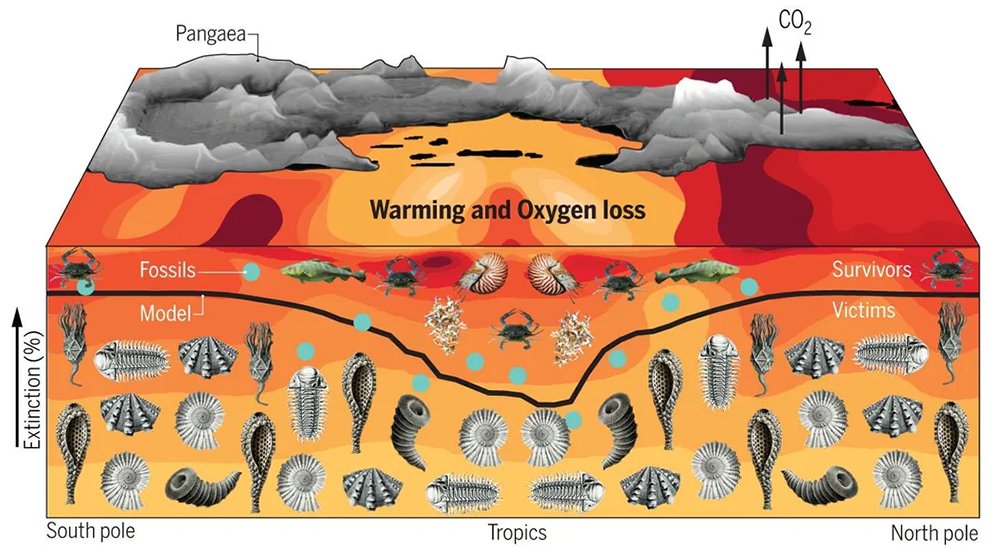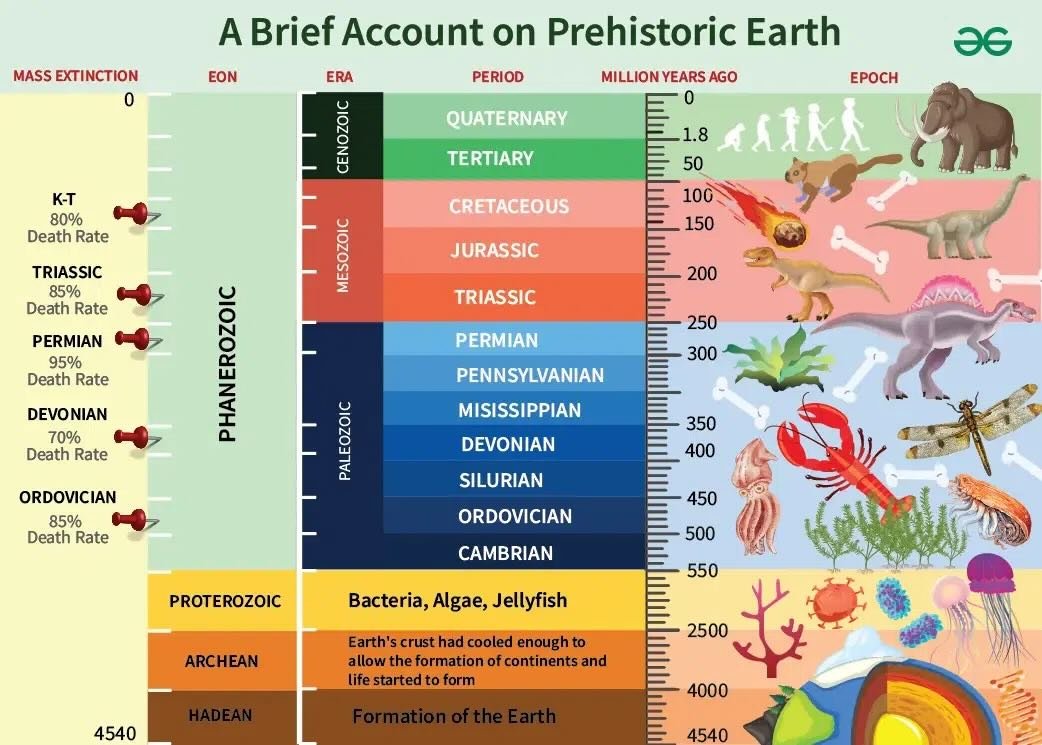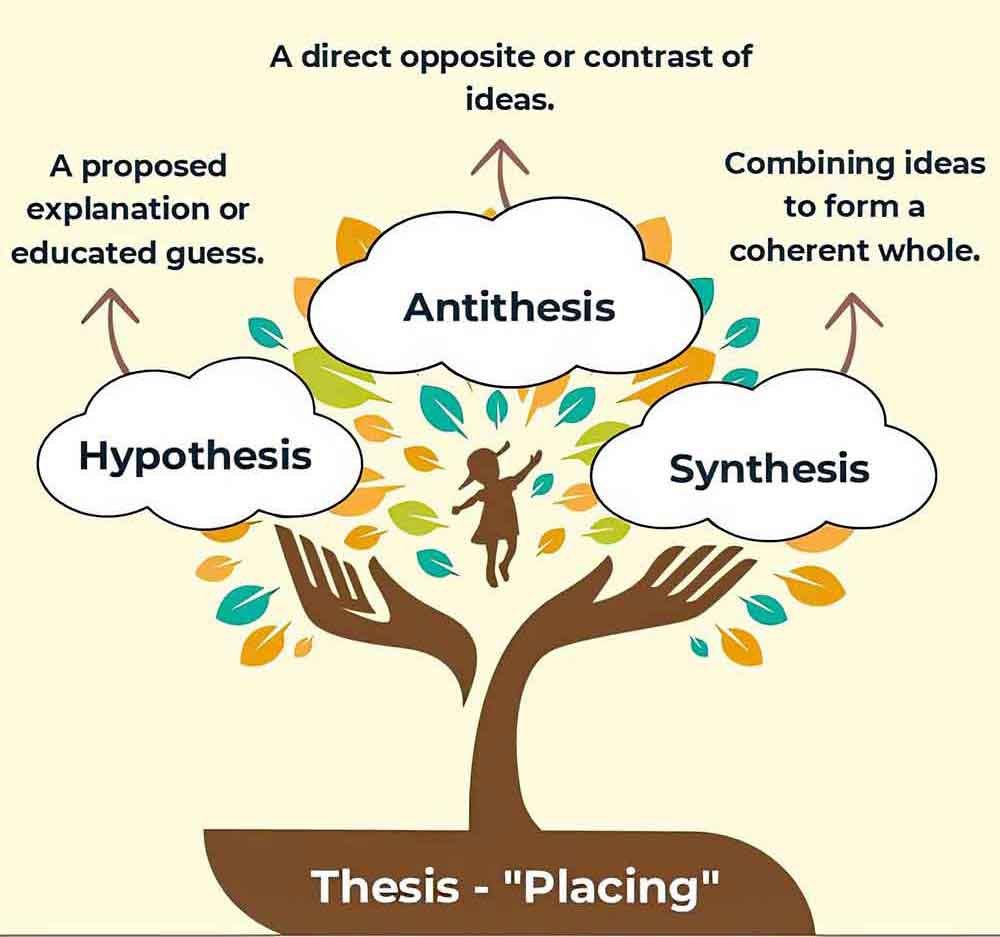The Great Dying: How Acidic Oceans
Caused Earth's Worst Mass Extinction
What nickname do scientists give to the extinction event that happened 252 million years ago?
What natural disaster caused the changes that led to the Great Dying?
How did scientists discover proof that the ancient oceans became more acidic?
What two problems did the volcanoes cause before the ocean became acidic?
Why is this ancient extinction important for us to understand today?
List the five periods (e.g., Jurassic) during which mass extinctions occurred.
Which of Earth's five mass extinctions was the most severe? Why?
What are two of the lessons the story of The Great Dying can teach us?
What can humans do to prevent something like this from happening again?
Do you think humans will take action to prevent another Great Dying? Why or why not?
A long time ago, about 252 million years ago, something terrible happened in Earth's oceans. Nearly all the sea creatures died in what scientists call "The Great Dying." This was the worst extinction event our planet has ever seen.
New research helps us understand that ocean acidification, which is happening again today, was what finally killed over 90% of all marine life back then.
The disaster began when enormous super-volcanoes started erupting. These weren't normal volcanoes - they were so powerful they erupted continuously for thousands of years. All these eruptions pumped unbelievable amounts of carbon dioxide (CO₂) into the air. This extra CO₂ did two dangerous things: it made the whole planet much hotter, and it changed the ocean's chemistry by making the water more acidic.
Scientists discovered proof of this ancient acidification by studying special rocks found in the deserts of the United Arab Emirates. These rocks used to be at the bottom of the ocean during the extinction. By looking at the chemicals in these rocks, researchers could tell that the ocean water had suddenly become much more acidic.
Before the water turned acidic, the volcanoes were already causing big problems.
First, the oceans were losing oxygen, which meant many creatures couldn't breathe.
Second, the planet was getting dangerously hot.
Third, the final blow came when the ocean became too acidic. Animals like shellfish and corals that needed certain minerals to build their shells and skeletons couldn't survive in the changed water. Even creatures that had managed to live through the other disasters finally died when the ocean's acidity became too much.
What's really scary is that the amount of CO₂ going into the air back then increased at about the same speed as it is today from human pollution. Professor Rachel Wood, one of the scientists studying this extinction, explains that this shows us what can happen when the ocean changes too quickly.
Today, we're seeing similar problems - coral reefs are dying, shellfish are having trouble growing their shells, and tiny but important creatures like plankton are in danger.
Earth has experienced five major mass extinctions in its history.
The first happened 443 million years ago during the Ordovician-Silurian period when about 85% of sea life died.
Then 359 million years ago in the Late Devonian period, around 75% of species disappeared, possibly because of asteroid impacts.
The worst was the Permian extinction 252 million years ago - the Great Dying that killed 96% of ocean species.
Later, 200 million years ago in the Triassic-Jurassic period, about half of all species vanished.
Finally, 65 million years ago in the Cretaceous-Tertiary period, the famous extinction that killed the dinosaurs occurred.
The Permian extinction stands out as the most devastating because so many different kinds of life disappeared forever.
Scientists worry that if we continue polluting the way we are now, we might cause another terrible extinction event. The story of the Great Dying teaches us several important lessons.
First, when CO₂ levels rise too quickly, ocean life can be destroyed.
Second, ocean acidification works as a silent but powerful killer.
Third, the pollution we're putting into the air today is repeating the same dangerous patterns from Earth's deadliest extinction.
There is some good news in this scary story.
Unlike the creatures of the Permian period, we humans understand what's happening and we still have time to make changes. By reducing the amount of CO₂ we release into the air and by working to protect ocean health, we can help prevent history from repeating itself.
The Great Dying shows us what happens when an ecosystem is pushed too far, but it also gives us the knowledge we need to protect our planet's future.
► COMPREHENSION QUESTIONS
— please answer with complete sentences
What nickname do scientists give to the extinction event that happened 252 million years ago?
What natural disaster caused the changes that led to the Great Dying?
How did scientists discover proof that the ancient oceans became more acidic?
What two problems did the volcanoes cause before the ocean became acidic?
Why is this ancient extinction important for us to understand today?
List the five periods (e.g., Jurassic) during which mass extinctions occurred.
Which of Earth's five mass extinctions was the most severe? Why?
What are two of the lessons the story of The Great Dying can teach us?
What can humans do to prevent something like this from happening again?
Do you think humans will take action to prevent another Great Dying? Why or why not?
► From EITHER/OR ► BOTH/AND
► FROM Right/Wrong ► Creative Combination
THESIS — Argue the case that humans WILL take action to prevent another Great Dying.
ANT-THESIS — Argue the case that humans WILL NOT take action and another Great Dying will occur (and may be underway right now).
SYN-THESIS — How might BOTH — humans taking action and not taking action — be true at the same time? What might that future look like?














